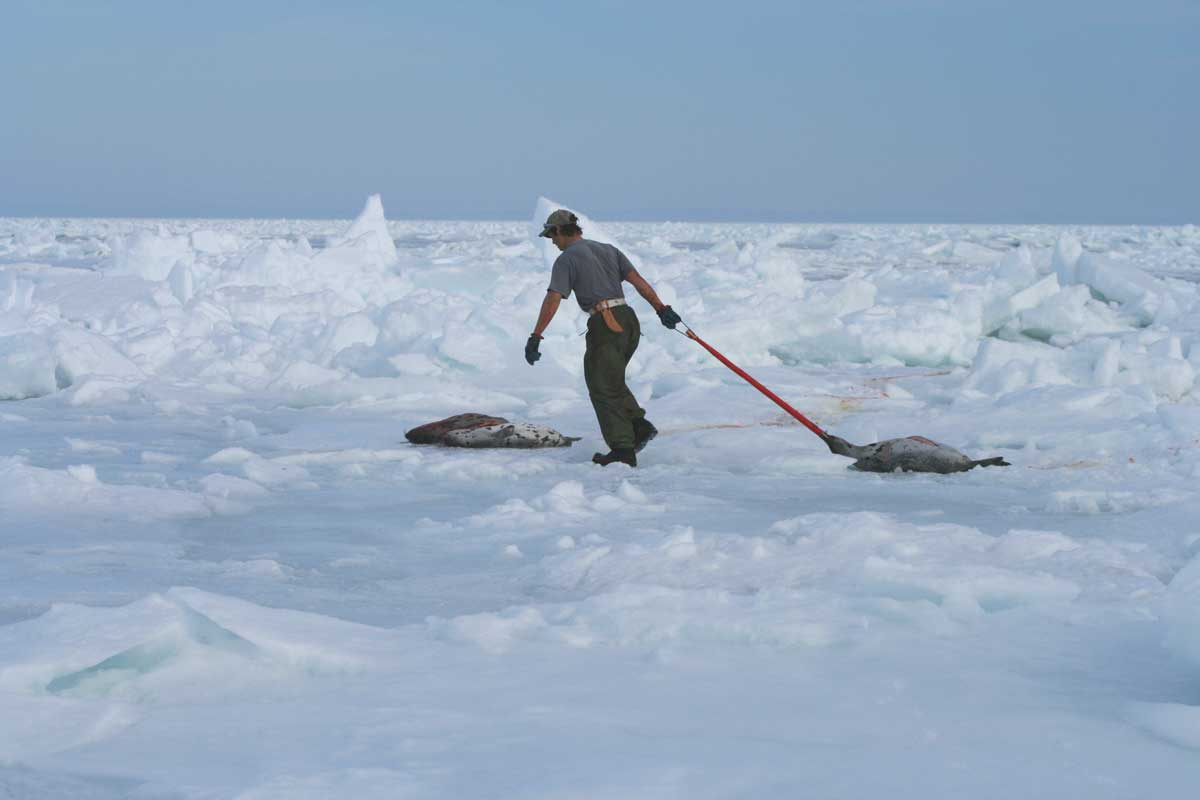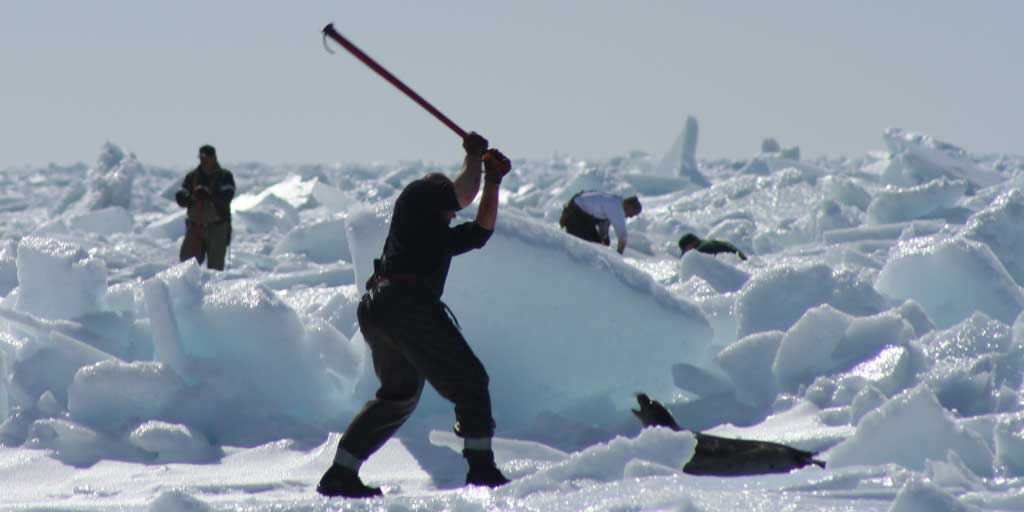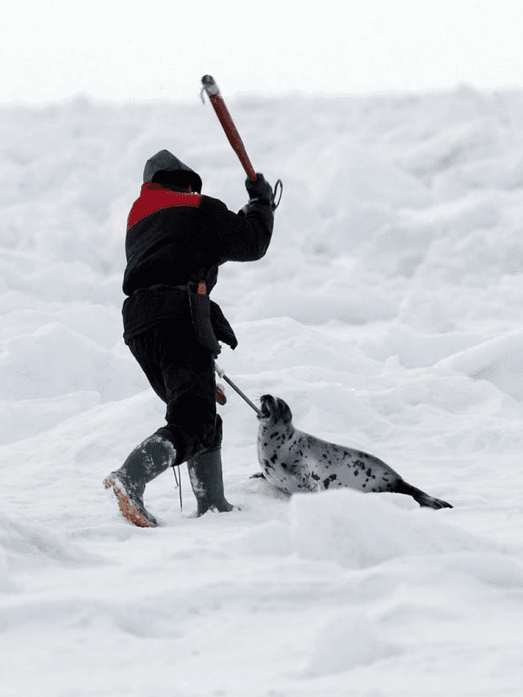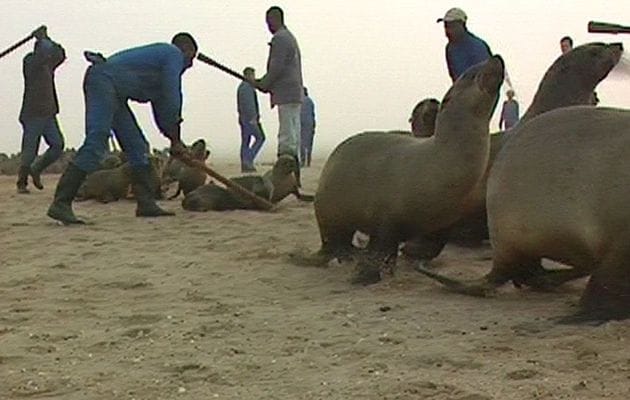The commercial seal hunt in Canada is one of the largest and most brutal slaughter of marine mammals on the planet. The annual slaughter sees thousands of baby seals clubbed or shot for their fur every year – over 2 million killed in the last 10 years. According to vets who have studied the hunt, it is one of the cruelest slaughters, with many seals skinned alive, some even while conscious. 95 per cent of the seals killed are pups just a few weeks old; at the time of slaughter they have not yet eaten their first solid meal or taken their first swim – they literally have no escape from the hunters.

Seal hunt
Canadian commercial seal hunt
Public opinion
The slaughter is condemned worldwide. Public opinion polls consistently show that the vast majority of people are strongly opposed to the seal hunt and according to a poll, 79% of the British public want the hunt to be banned. There is a lot of misinformation put out about the seal slaughter. For example, it is a widespread misunderstanding in parts of Canada and elsewhere that the slaughter of seals in Canada is undertaken to protect fish stocks and allow for the recovery of the Atlantic cod. The fact is cod have been virtually wiped out in the North West Atlantic by commercial overfishing overseen by the Canadian Department of Fisheries and Oceans (DFO) – the very people that tried to put the blame on the seals.
Seal population
The 2011 harp seal quota is the highest yet since the government introduced quota management in 1971 and exceeds the killing levels of the 1950s and 60s that lead to a reduction in the population by up to two thirds. This comes at a time when the harp seal population is under threat from climate change. Harp seals are ice dependent and need sea ice to give birth and nurse their pups on until the pups are strong enough to survive in open water.
Over the last 20 years there has been well below average sea ice formation in the key whelping areas. In some areas, ice conditions were so poor that the Canadian government has estimated 100% mortality for pups born there. Independent scientists have warned that such reckless slaughter levels combined with the impacts of climate change pose a serious ecological threat to the survival of harp seal populations.
EU seal product ban
In 2009, the EU prohibited trade in the products of commercial seal slaughters, with an exemption for products of traditional Inuit seal hunts. Even though Canada and Norway have been heavily challenging the ban, the WTO ruled in 2013 that the EU ban on trade in commercial seal products is justifiable on public morality grounds.
Canadian seal hunt
Seal hunt Namibia
Each year between July and mid-November tens of thousands of Cape fur seal pups are clubbed to death on the coast of Namibia. The clubbing of the seal pups mainly takes places in the seal reserves Atlas Bay and Cape Cross – the latter being a well known seal watching area attracting nearly 50.000 visitors a year. In 2014 over 30.000 Cape fur seals were brutally slaughtered in Namibia, mainly seal pups clubbed to death for their fur. A few thousand among them are bull seals killed for their genitals, which are considered aphrodisiacs in parts of Asia.
Photos
More facts
The Economics of Seal Hunting and Seal Watching in Namibia (2011)
A study commissioned by The Humane Society International, World Animal Protection, Bont voor Dieren (Netherlands) and Respect for Animals (UK)








